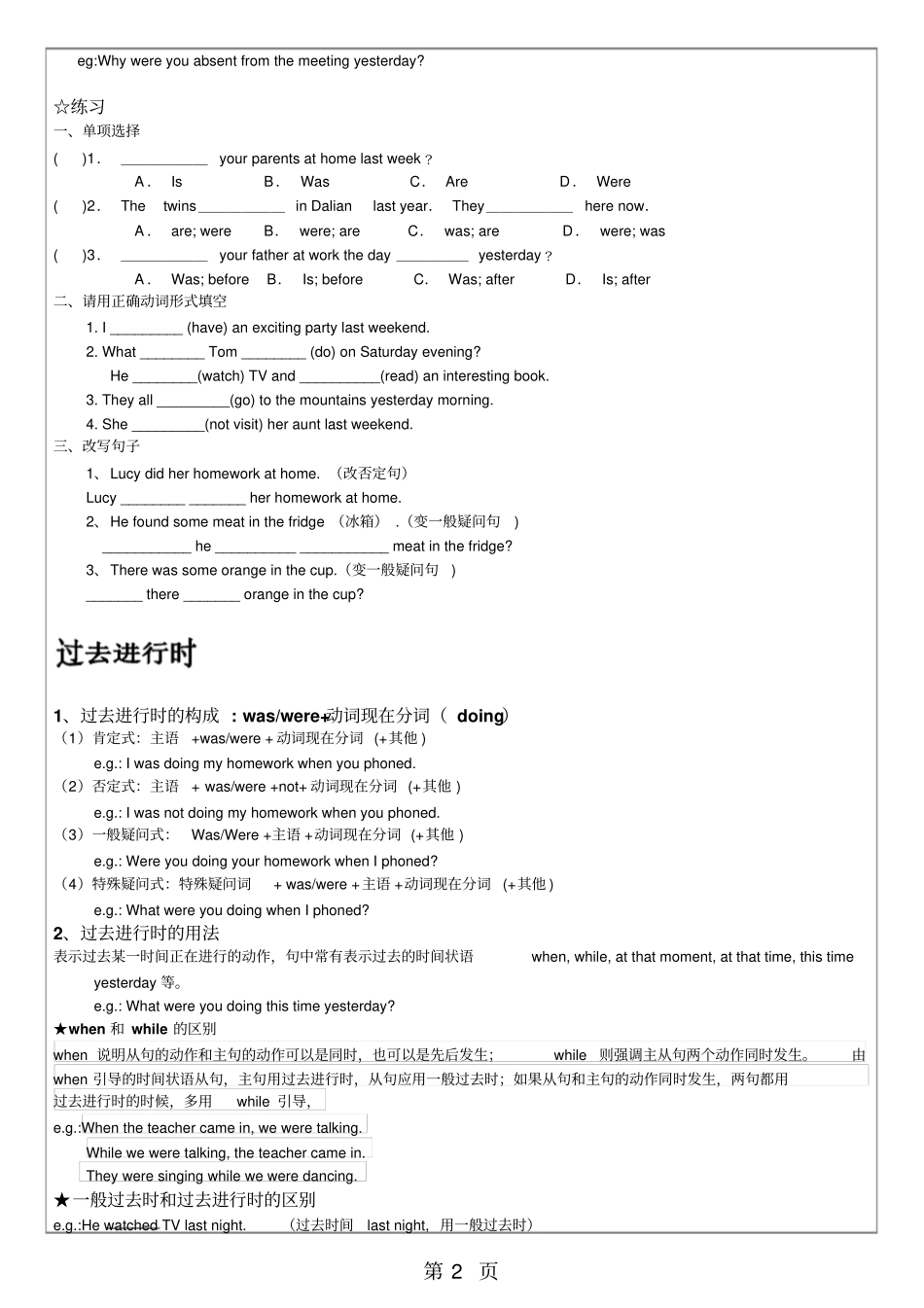第 1 页1. 一般过去时的用法(1)表示过去某个时间所发生的动作或存在的状态。常和表示过去的时间状语yesterday, last week, an hour ago, just now, the other day, in 1982, then, at that time, in the past 等连用。e.g.:Where did you go just now? 刚才你上哪儿去了?(2)表示在过去,经常或反复发生的动作。e.g.:When I was a child, I often played football in the street. (3)在时间状语从句和条件状语从句中,用一般过去表示过去将来的动作。e.g.:Alina said she would come if I promised to wait for her. Mary told me that as soon as she arrived, she would call me. 2、一般过去时的构成(1) 肯定句的结构①be 动词:主语 +was/were+其它。e.g.:Tom was very unhappy yesterday. ②行为动词:主语+行为动词的过去式(+其它 )。e.g.:Alice took the middle-term exam last week. ★规则动词过去式、过去分词的构成(不规则动词见附录)一般情况下,在动词末尾加-ed work-worked play-played 以不发音的-e 结尾动词,动词词尾加-d live-lived hope-hoped 以辅音字母+ y 结尾的动词,把-y 变为 -i 再加 -ed study-studied cry-cried 以重读闭音节结尾,且词尾只有一个辅音字母的动词,双写词尾辅音字母,再加-ed stop-stopped prefer-preferred (2)否定句的结构①be 动词:主语 +was/were 的否定形式 +其它 . 肯定形式否定形式缩写形式was was not wasn’twere were not weren ’te.g.:She wasn’ t happy yesterday.②行为动词:主语+didn ’t(did not)+动词原形 (+其它 ) e.g.:He didn't have breakfast yesterday.(3)一般疑问句的结构①Be 动词 :Was/Were+ 主语 +其它?Yes,主语 +was/were. No,主语 +was/were not. e.g.:Were you at home yesterday? —— Yes,I was/No,I was not. ②助动词 :Did + 主语 +动词原形( +其它)?Yes,主语 +did No,主语 +didn ’ t.e.g.: Did you call me last night? ——No,I didn’ t.(4)特殊疑问句的结构①特殊疑问词 +助动词( did)+主语 +动词原形 +其他?eg:Where did you go yesterday? ②特殊疑问词 +be(was/were)+ 主语 +其他?第 2 页eg:Why were you absent from the meeting yeste...


